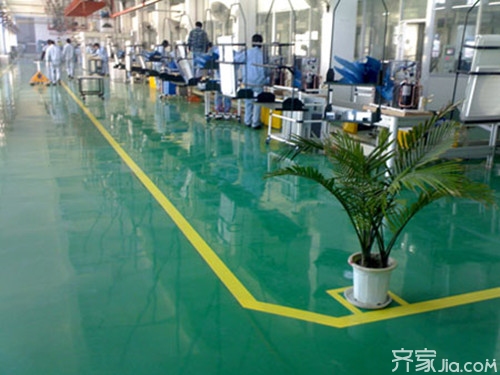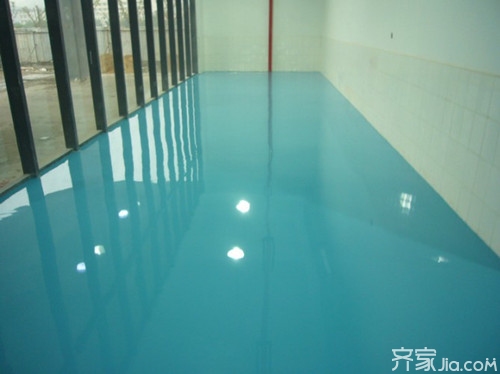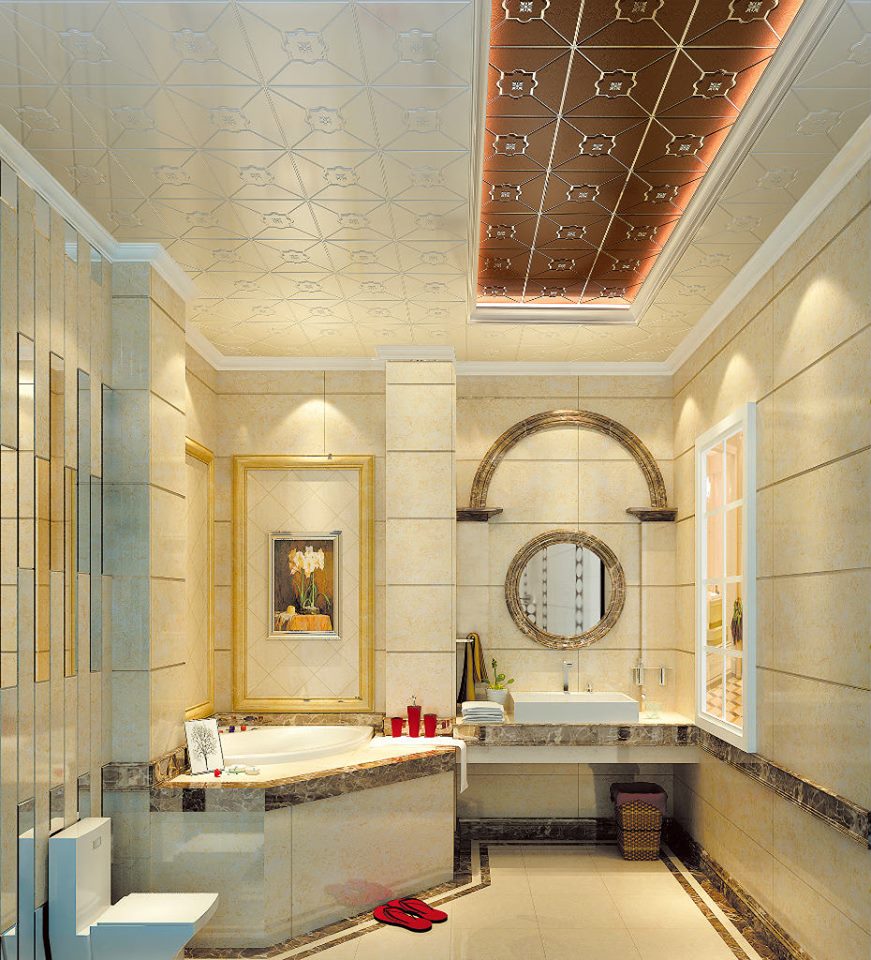Epoxy self-leveling construction process and precautions are too full!
Epoxy self-leveling performance is impeccable, but due to the construction technology and the quality of the coating itself, the quality difference of the self-leveling floor is also very significant. The following three aspects call everyone to introduce the quality of epoxy self-leveling. The following small series introduces the relevant knowledge of epoxy self-leveling construction process and precautions.

Epoxy self-leveling construction process:
1. Basic inspection and processing
1.1 Anti-static epoxy self-leveling ground has higher requirements on the strength of the base layer, and the strength level of the base layer should not be lower than C20. The original design of the original drawing is 100mm thick and is C20 fine stone concrete, taking into account that most floors are workshops and warehouses, and load-bearing machinery. To pass, it is necessary to reinforce the ground floor of a storey. Through consultation with the Design Institute, a 50mm thick reinforced concrete cushion with strength of C30 is added to the original design base.
1.2 The surface of the bedding requires very high cleaning. The upper layer of concrete is firmly bonded to the underlying cushion, and the surface is required to be hard and smooth. There must be no delamination or sanding.
1.3 The degree of dryness at the base level is due to the large amount of moisture contained in the construction process of the concrete and mortar. It must be dried to the required degree when the ground coating is applied. Water content of concrete can be measured by plastic film method. Plastic film method: Place a 45cm×45cm plastic film on the surface of concrete and seal the four sides with tape for 16 hours. The water droplets appear on the surface of the film or the surface of the concrete turns black, indicating that the concrete is too wet. Not suitable for painting.
1.4 Check the flatness of the floor with a 2m ruler, fill the concave area with an epoxy mortar and compact it, and use a dustless grinder to polish the protruding part to a flat surface.
1.5 The original reserved ground expansion joints shall be filled with PU material or other foaming materials and filled to a depth of 1 to 2mm from the ground.
2. Primer construction
2.1 Use Epoxy Epoxy Primer: The main paint and curing agent are mixed according to the proportion, and stir evenly; with a roller evenly roll, no leakage; door edge, corner, wall foot, machine feet, etc. Use the brush to brush: Roll When coating, be thin and even. After coating, it should be glossy. Matte areas should be painted at the appropriate time.
2.2 Grounding copper mesh: Lay copper foil and conductive system network according to the design requirements, and use plastic putty to fill in the joints.
3. The middle coating construction
Scratch anti-static special coating: After the copper foil is laid, apply the anti-static coating in a scraper to cover the copper foil. After the intermediate coating is completely dried, grind it with the sander and sandpaper, and the knife marks will be generated. The granules are polished away and vacuumed to clean them.
4. Top coat construction
After thoroughly mixing the topcoat and curing agent, apply a special serrated knife to keep the floor flat.
5. Finished product protection
During the hardening of the back layer of the construction (within 24 hours), personnel are forbidden to enter so as not to leave traces. After 7 days of maintenance, it can be used formally. And the surface of the surface is smooth, free of impurities and traces of joints. After the construction, no abnormal phenomena such as air bubbles, poor hardening, and color difference are allowed on the surface.

Epoxy self-leveling construction notes:
1. Construction during the rainy season: If the air humidity exceeds the construction conditions, manual ventilation facilities (exhaust fans, etc.) should be added to control the humidity. Heavy rain, high humidity and other days should stop construction.
2. When the resin is applied to the entire surface, the ambient temperature must not be too low or too high, and the humidity must not be too high to prevent the resin mortar from being sham-cured.
3. The construction site should pay attention to good ventilation.
4. Do not touch the skin during construction. It is best to have protective gloves on both hands.
5. Cleaning site should be cleaned during construction, and site and garbage should be cleared after construction.
6. Dust on the floor must be completely removed to ensure the primer effect.
7. When the ground is wet, it must be dried to a moisture content of 8% or less, or use a special primer.
8. If the layers of epoxy resin are out of the effective ground, the surface of the material must be roughened and treated with a layer of primer (depending on the length of interval) before applying the upper layer of paint.
9. The primer must be fully volatilized before construction can be done to avoid blistering.
10. When preparing the material, the bottom cloth (or cardboard) shall be placed on the bottom half to avoid any single drop of material on the plain, causing quit. If it has been dripped on the plain, it shall be wiped off immediately.
11. The mixed material should be coated within the usable time to avoid surface hardening and failure to level.
12. Immediately remove any sand or other impurities found on the coating.
13. Epoxy resin dustproof and wear-resistant floor construction should pay attention to the mixing ratio, mixing and mixing can be used.

The above is related to the introduction of the epoxy self-leveling construction process and precautions. If you want to know more relevant information, please pay more attention to this site and will provide you with more complete, more detailed and updated information.
House Decoration Precautions Construction Installation Home Decoration Precautions Decoration Precautions House Decoration Precautions
PVC Ceiling Tiles is new materials for wall decoration.
Our PVC Ceiling Tiles is widely used in interior decoration like hotel, restaurant, laboratory, bathroom, home etc.
It is radiation free, water-proof, fire-proof, wear resistance (green decoration material).
Feature
1. Fireproof
PVC Ceiling Tiles is non-flammable and conforms to the national grade B1 standard (GB8624-2012 Grade B1).
2. Water-proofing and moisture-proofing
The product is allowed to long-term expose to moist environment.
3. Easy to install
PVC Ceiling Tiles is easy to cut, saw nail, stick. it has a smooth finish one side that can be taped and jointed ready for decoration including wallpapering, painting, texture coat and veneer, and a rougher side for tiling.
5. Environment
PVC Ceiling Tiles does not contain any organic solvents, formaldehyde, asbestos, oils or other toxic substances that can have a negative impact on the environment and waterways.
|
Specification size |
1220mm*2440mm |
|
Surface Finish |
High UV coating |
|
Thickness |
1-9mm |
|
Color |
Customized colors |
|
Hardness |
3H-6H |
|
Materials |
PVC |
|
Type |
PVC Ceiling Tiles |
|
Installation |
Easy installation |
|
Life Span |
15 years |
|
Place of original |
China |

PVC Ceiling Tiles
Pvc 3D Ceiling Tiles,Pvc Wooden Ceiling Tiles ,Pvc Marbling Ceiling Tiles,Uv Pvc Ceiling Tiles
Shandong Kingmarble Decoration Materials Co.,Ltd , https://www.pvcpanel.de